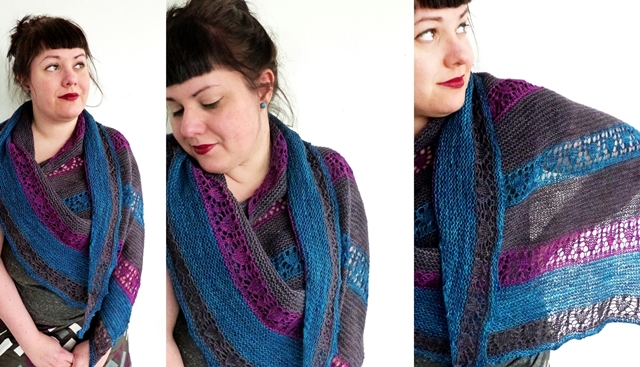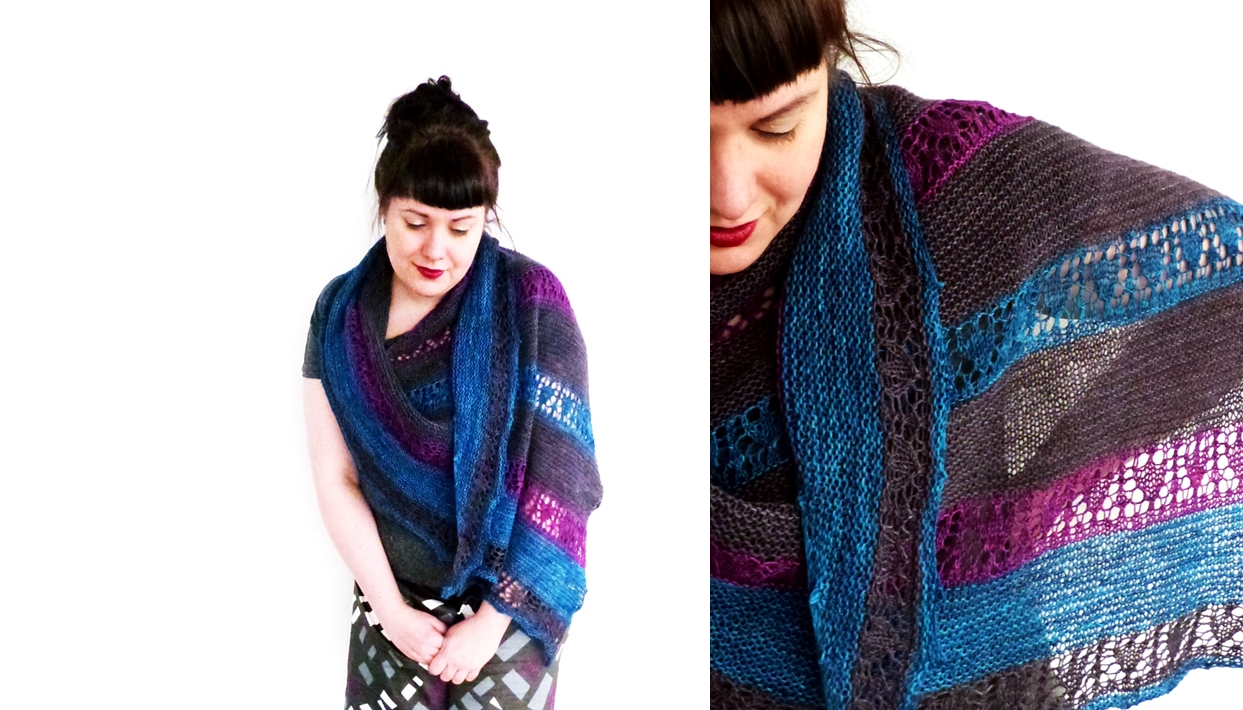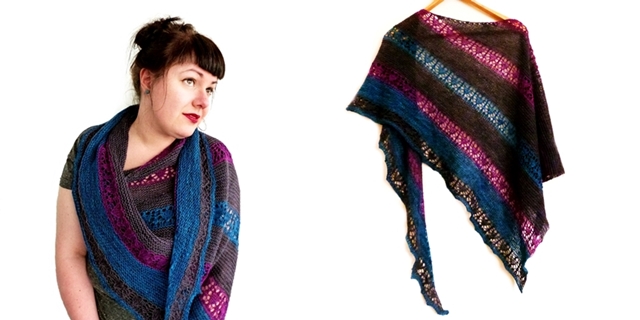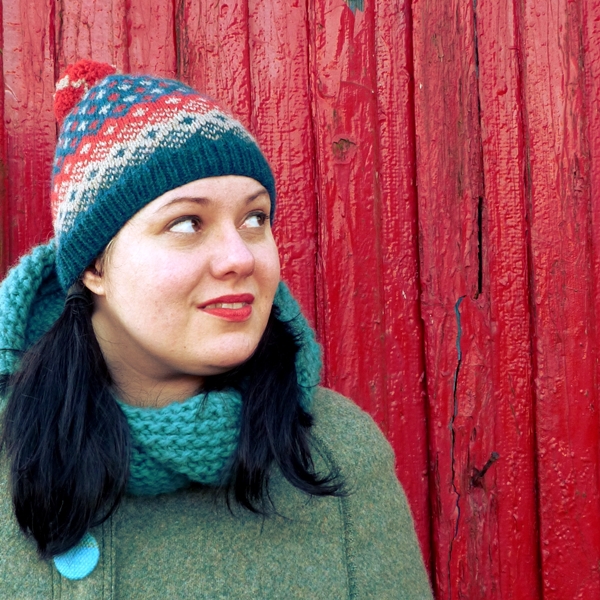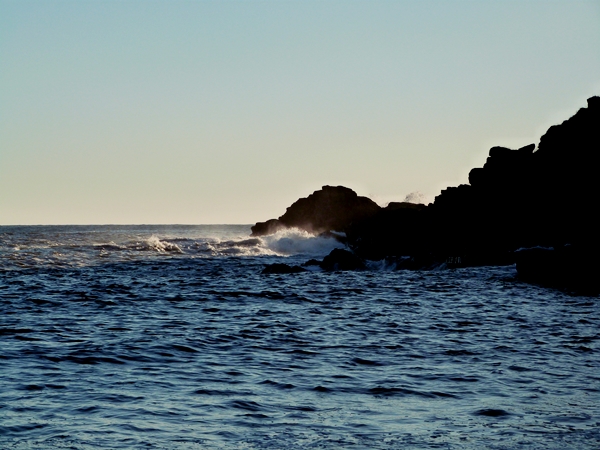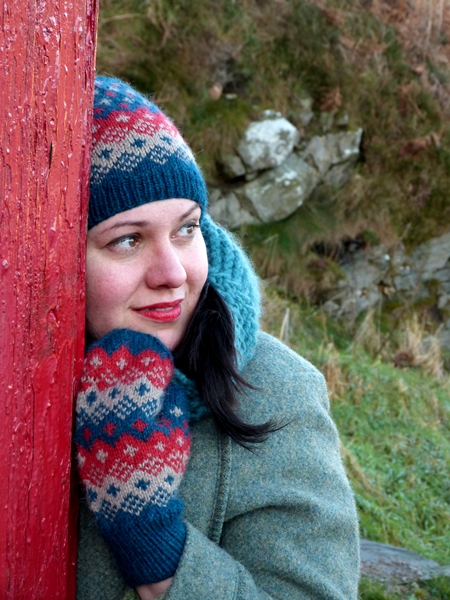I have just released the Knowth shawl as a single pattern on Ravelry, and wanted to take a moment to write about my thoughts behind it.
The pattern was originally designed for Carol Feller’s Echoes of Heather & Stone collection, a book inspired by ancient Ireland. I read about early Irish history and archaeology, and that is when I learned about the carved calendar stone of Knowth. It captured my imagination and fuelled the design process.
Pre-historic stone carvings speak eloquently about the passage of time. Not only have they survived for millennia, but their making was a slow process. They were carved by careful hands using what we'd consider primitive tools.
I have always loved such carvings.
As a child I would let my fingers skim local rock art, imagining what it would be like to live several millennia ago. These days I know better than to touch ancient artefacts, but in my imagination I am still reaching out and touching the past. My makers' hands are no different to the stone carvers' hands. My tools and craft may be different, but I am as human as the person who carved an image into a rock so many years ago.
The carved stone at Knowth captures the passage of time. It was carved approximately 5,000 years ago by patient hands; it is slightly weather-worn by millennia of sunshine, rain, and storms; and it was probably intended as a sun-dial. I like how this single carving contains both the brief moment of a day, the careful creative expression carried out over weeks or months, and the long stretch between then and now. Three expressions of time in one beautiful piece.
It became an obvious source of inspiration for a knitted shawl.
The Knowth shawl is less a straightforward interpretation of the stone – although its half-circle shape and strong geometric lines obviously lend themselves to knitwear design – but more a meditation upon what time and mark-making mean to a knitter. Garter stitch is easy to knit, but its meditative rhythm is interrupted by slipped stitches that stack to form etchings on top of the knitted fabric. An almost-hourglass-like cable also nods to marking time and its relative complexity asks that the knitter slow down.
Making things takes time and this is ancient knowledge.


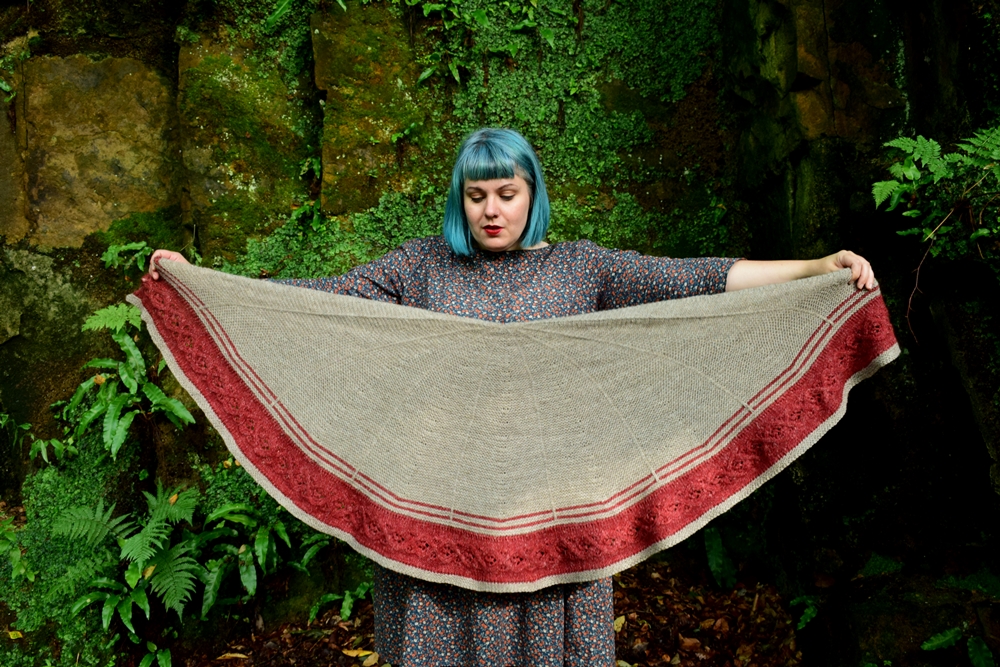

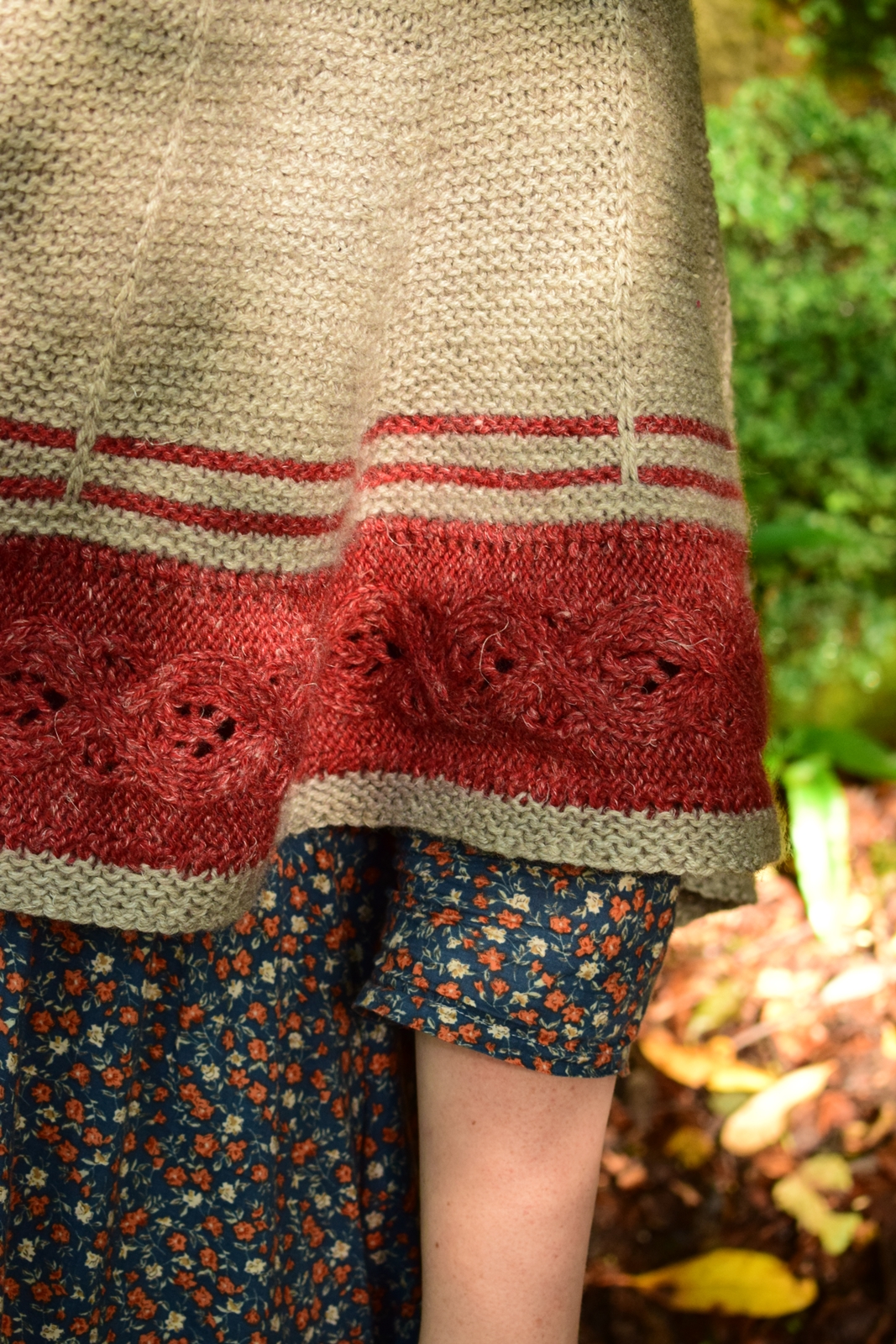


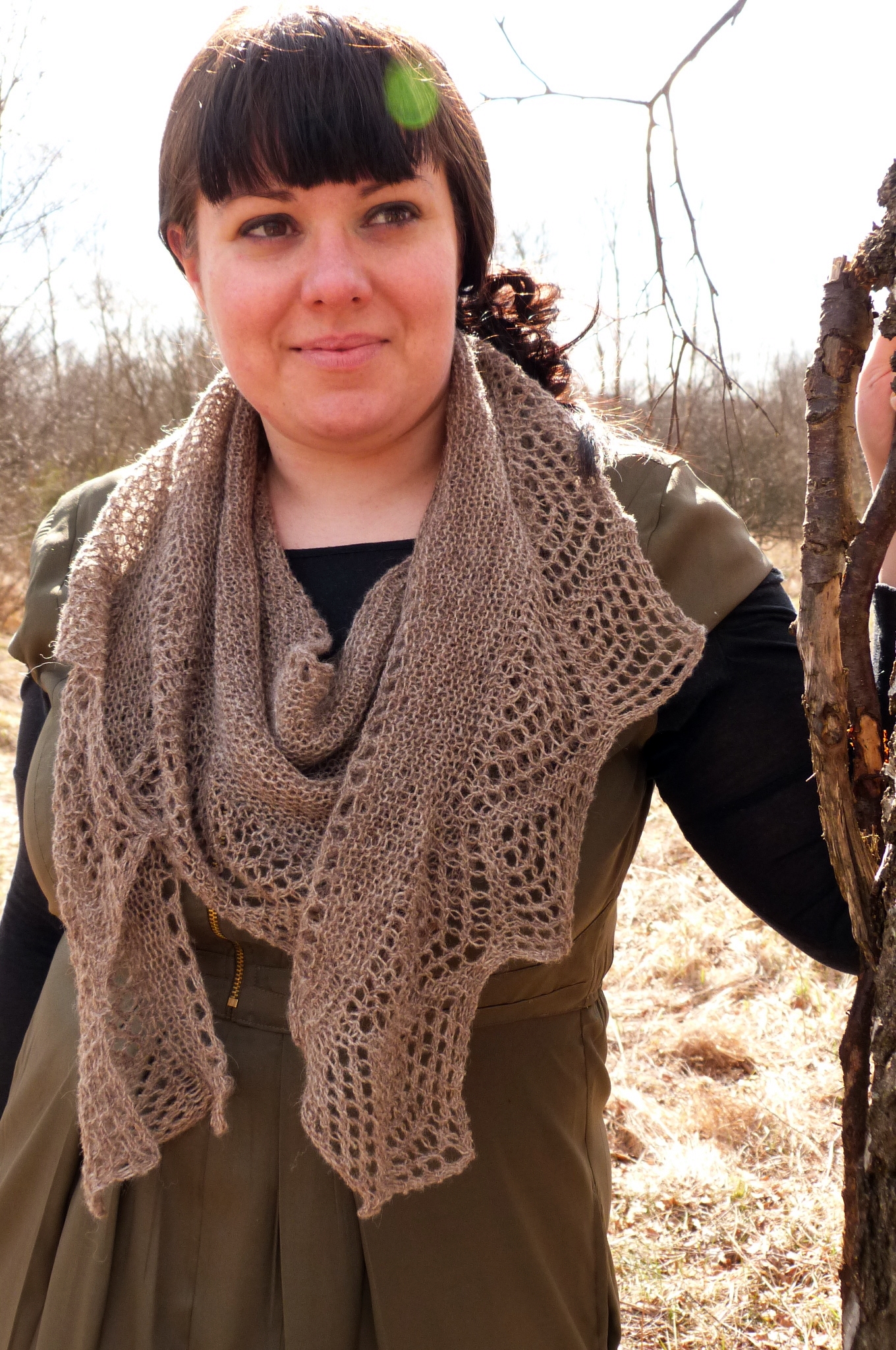

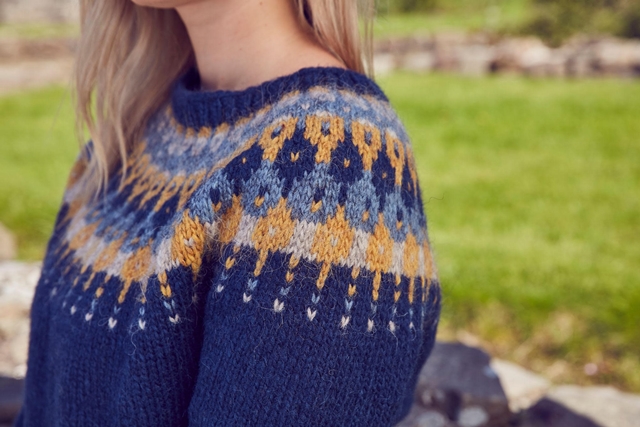

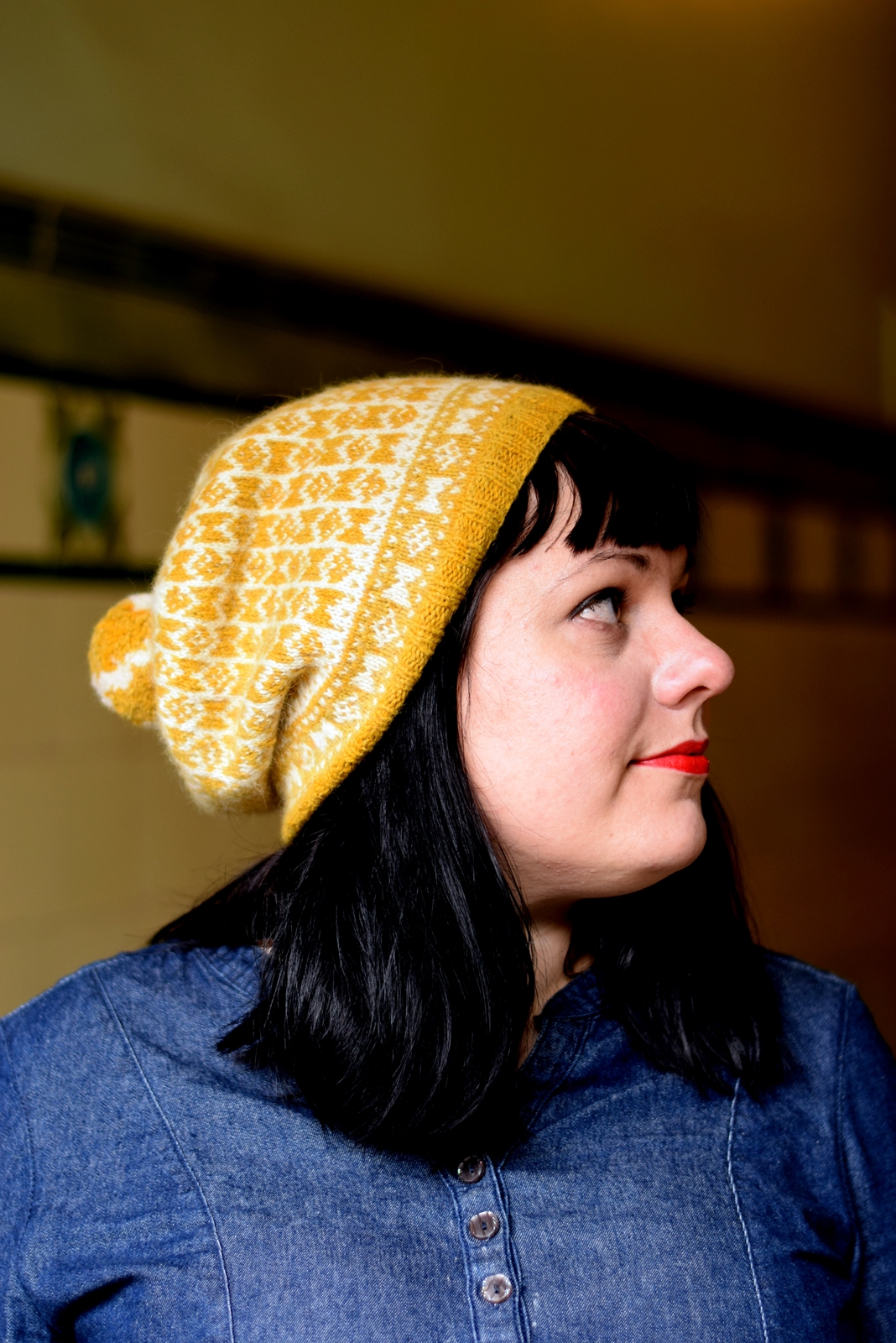 Judging by my inbox, this pattern launch should please a lot of people out there! Say hello to the Burnet hat! This was an Edinburgh Yarn Festival 2016 exclusive pattern, but the copyright has now reverted to me. Burnet is one of my own personal favourite patterns and I am so happy that so many of you agree with me!
Judging by my inbox, this pattern launch should please a lot of people out there! Say hello to the Burnet hat! This was an Edinburgh Yarn Festival 2016 exclusive pattern, but the copyright has now reverted to me. Burnet is one of my own personal favourite patterns and I am so happy that so many of you agree with me!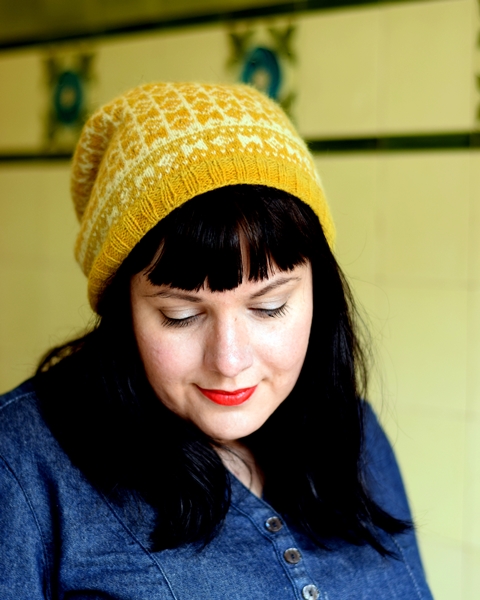
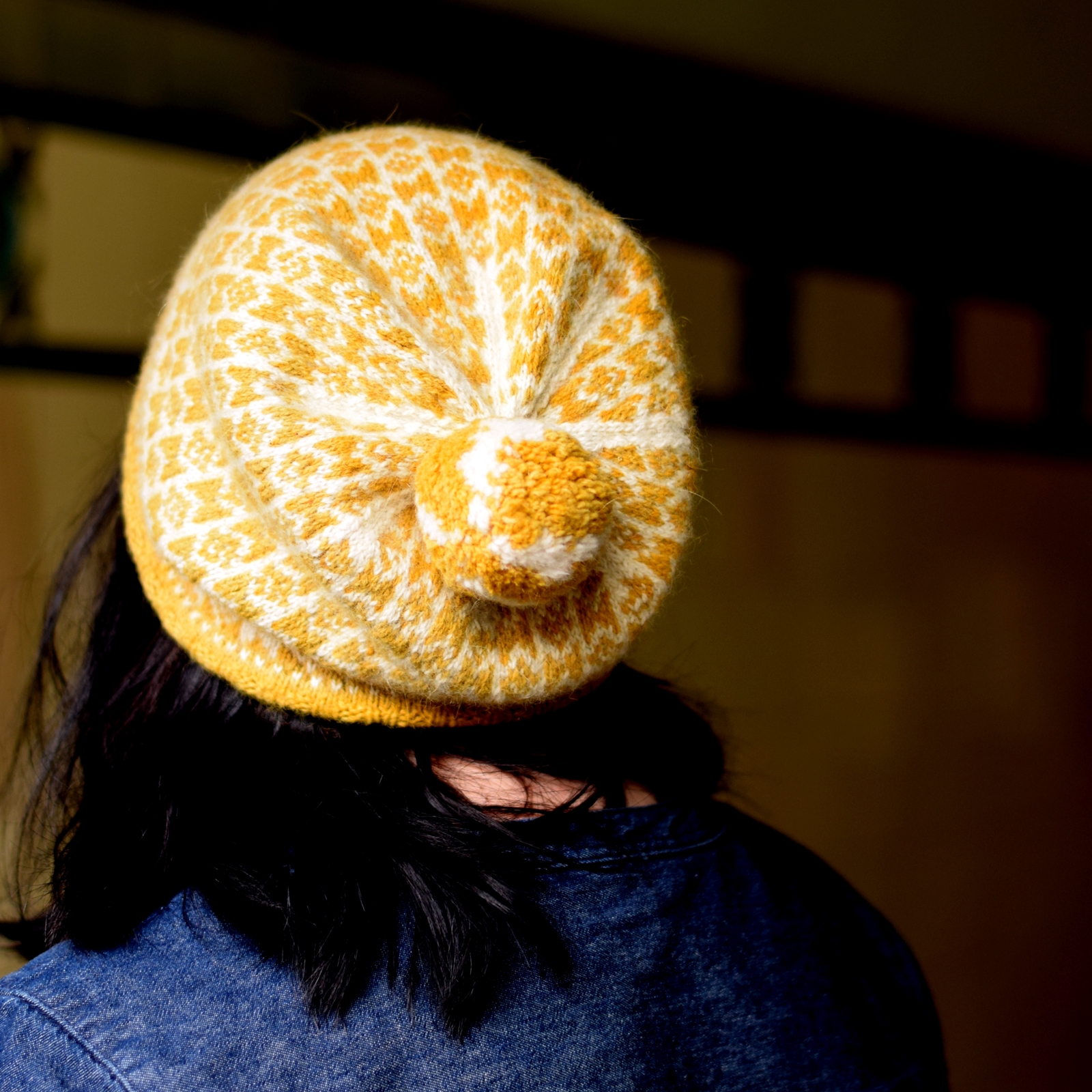 Burnet is knitted using two hanks of
Burnet is knitted using two hanks of 
